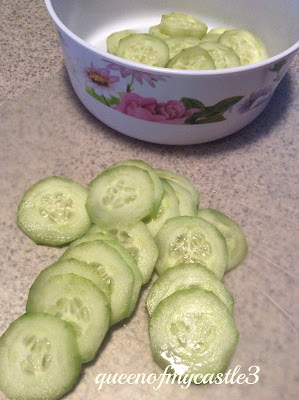I’ve been writing about food for so long that sometimes I forget what it’s like to be a beginner. I don’t remember that recipes can seem like a foreign language to an inexperienced home cook. If you have barely picked up a spatula, words like simmer or sear, braise or sauté can stop you before turning on the stove.
I suffered from the same thing when I first became a food writer in 2007. I took culinary classes at Wake Technical Community College mainly to learn the language of the kitchen. (Basically, so I wouldn’t embarrass myself while interviewing chefs.)
I learned the difference between mince and dice, braise and saute, blanch and parboil. I was no longer mystified by words like julienne, brunoise and tournee, all French terms for cuts of vegetables. I learned that to become proficient in the kitchen one needs to be well-versed in its language.
To help others, I offer a glossary of common kitchen terms that can be befuddling to beginners.
Baste: To moisten food during cooking with melted fat, pan drippings or a sauce. This technique is used to prevent drying out and to add flavor; most often used in reference to a Thanksgiving turkey or roast chicken.
Blanch: To briefly partially cook food in boiling water or hot fat. Often used to loosen peels from vegetables or fruits, like tomatoes and peaches.
Braise: A method of cooking where food is first browned in hot fat, then covered and cooked slowly with a small amount of liquid.
Caramelize: The process of cooking food that browns the sugars in it, enhancing the flavor and appearance of food. Also used in reference to cooking sugar until it liquifies and turns color from golden to dark brown.
Chiffonade: To thinly slice greens or fresh herbs; in French, the term literally means “made of rags.”
Cream: To mix together softened fat and sugar to incorporate air; often the first step in baking recipes.
Deglaze: After food has been cooked in a pan, the food is removed and a small amount of liquid – usually wine or stock – is added and stirred to loosen any browned bits on the bottom of the pan; the resulting liquid is often the basis for a sauce.
Dice: To cut vegetable into square pieces; measurements range from small dice (1/4-by-1/4-inch square) to medium (1/2-by-1/2-inch) to large (3/4-by-3/4-inch).
Dredge: To coat a food with flour or finely ground crumbs, often before sautéing or frying.
Fold: To incorporate light, airy ingredients into heavier ingredients. The light ingredients are placed on top of the heavier ones in a large bowl. The technique involves using a rubber spatula to cut down through the two mixtures, across the bottom of the bowl and up the side. The bowl is turned a quarter turn and the down-across-up-and-over motion is repeated. Often used to describe incorporating beaten egg whites into a cake batter.
Julienne: To cut food into matchstick-like pieces (1/8-by-1/8-by-2-inch). Fine julienne is even smaller (1/16-by-1/16-by-2-inch).
Macerate: To soak food in liquid, often alcohol.
Mince: To cut food into very small pieces where uniform size is not a concern. Often used to describe garlic preparation.
Parboil: To partially cook a food in boiling or simmering liquid; similar to blanching, but cooking time is longer. Often used to prepare an ingredient that will be used later in a quick-cooking method, like stir fry, so that all ingredients will be fully cooked in the same amount of time.
Pinch: The smallest amount of a spice or dried herb that you can hold between thumb and index finger.
Poach: To cook food gently in liquid just below the boiling point. Often used to cook eggs and fish.
Puree: Any food that is finely mashed to a smooth, thick consistency. Often done in a blender or food processor and involving fruits and vegetables.
Render: To cook meat over low heat to remove fat. Often used to describe cooking bacon.
Sauté: To cook food quickly in a pan with a small amount of oil or fat.
Scald: To heat a liquid, usually milk, to just below the boiling point.
Score: To cut shallow gashes across the outer surface of a food before cooking. Often done with meat and bread dough.
Sear: To brown food quickly over high heat. Usually done as an initial cooking preparation.
Sift: Often used to describe how to prepare flour for baking; the flour and dry ingredients are put through a sieve or sifter to remove lumps and incorporate air.
Simmer: To cook food gently in liquid at a low temperature, about 185 degrees, where tiny bubbles just begin to break the surface.
Stir-fry: To quickly fry small pieces of food in a wok over high heat while constantly stirring the food.
Truss: To tie poultry, most often a whole bird, with butcher’s string to create a compact shape for cooking. Trussing ensures even cooking.
SOURCES: “THE NEW FOOD LOVER’S COMPANION,” BY SHARON TYLER HERBST AND ROB HERBST (BARRON’S, 2007), AND “ON COOKING: A TEXTBOOK OF CULINARY FUNDAMENTALS,” BY SARAH LABENSKY AND ALAN HAUSE (PEARSON PRENTICE HALL, 2007).























































